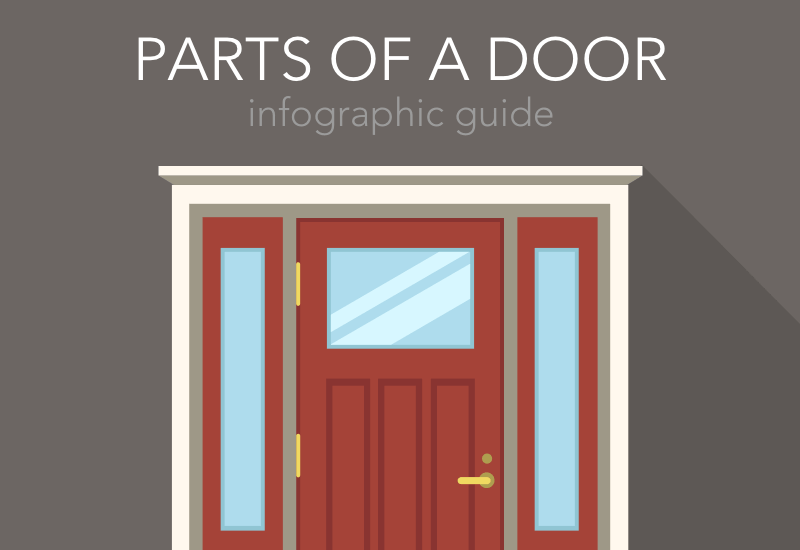A Quick Guide: Parts of a Door
Posted
on February 2, 2017

If you want to make a major impact, replacing your door is one of the simplest things you can do. It's an easy way to upgrade your home, but before you tackle the project or start measuring your door, it's a good idea to learn the lingo. Let's take a look at all the different parts of a door, and how they all come together.
Door part names
Door frame
The door frame is the entire framework supporting the door, including the sill, jamb and head. This is also known as a door sash. Door frames can be made of wood or aluminum and are made to blend seamlessly with your home. The size of the frame determines the size of the door that fits in between.
Download this door parts infographic map
Sill
The door sill is the very bottom part of the door frame that rests on the floor.
Jamb/door jam
The two door jambs are the sides of the door frame that run vertically.
Head
The head is the top piece of the door frame, running horizontally.
Panel
The panel is the term for the door itself. This is the part that swings open and closed.
Astragal
If you have a pair of doors in your entry, the astragal is the vertical piece that runs between them, from the sill to the head.
Fixed panel
This is the panel of the door in a pair of doors that does not open or close.
Door sweep
A sweep is a piece of weather stripping at the bottom of the door that is weather resistant and forms a seal between the door sill and the door frame. Door sweeps increase the energy efficiency of your home.
Threshold
A threshold is the transition from the door sill to the floor of the room. A threshold is a decorative element that can be simple or elaborate, depending on your style.
Transom
The transom is the horizontal beam that separates the door from the fanlight or window above it.
Strike plate
The strike plate is placed on the door jamb where the hole for the bolt of the door and the bolt meet. It is a small metal plate that is screwed to the door jamb.
Sidelight
Sidelights are fixed glass panels attached to both or either side of the door, outside the frame. These tall narrow windows allow more light into the home.
In-swing or out-swing
This refers to whether a door swings into the room or out of the room when opened.
Door knobs and hardware
Knob
The doorknob is the round mechanism used to open and close the door. Doorknobs come in an amazing variety of materials, such as antique brass, rubbed bronze or satin nickel.
Hinge
The hinge is the jointed device that pivots the door panel. There are different types of door hinges used on doors including barrel hinges, pivot hinges, and concealed hinges.
Foot bolt
This is a type of lock that is installed at the bottom of the door and is operated with your foot, commonly used on sliding patio doors.
Key lock
There are an incredible number of choices when it comes to entry door locks. Two types are the cylinder lock, which moves the bolt by rotating a cylinder, and the multi-point lock, which has several locking points but only one handle.
Getting to know door part descriptions is a great way to start your new door project. Your doors have a big impact on every day of your life. Replacing an entry door will enhance your curb appeal, save energy and increase the value of your home. For a visual of where these door parts appear, download this door parts infographic. Once you're more familiar with door part names, it's easier to talk to contractors and dealers to get help choosing the right door for your project.
Schedule a free consultation to find windows and doors for your home.
